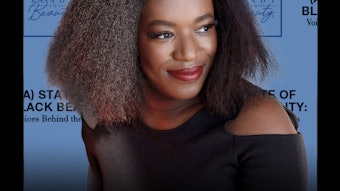
To move toward product launch with confidence, marketing teams need reliable consumer intelligence. Brands are turning back to the basics more and more to get this data—basics such as the time-tested focus group.
Small focus groups offer brand managers and executives a chance to literally see consumer reactions to their most burning questions such as, “Do you like the smell of this product? What do you think of the name? Would you purchase this product?” These groups offer a powerful method of capturing colorful, qualitative data from a select group of consumers.
Knowing your target consumer before you vet your focus group panel is key to selecting participants...
This data can be further validated with an accompanying quantitative study in which responses can be captured from thousands of consumers. This double-whammy approach of quantitative and qualitative data provides not only emotional responses, but the detailed, intellectual feedback that sets brands up for success with their consumers, right out of the gate.
The DNA of a Focus Group
Focus groups are tests of your product or brand with targeted consumers. Discussions are often held at specialized testing facilities which are equipped with rooms for participants, as well as private, one-way glass viewing rooms for brand managers and executives.
These groups can have anywhere from three to 10 participants. Discussions are facilitated by an impartial moderator who is trained to guide the group through a questionnaire designed by the brand managers to gauge the participants’ emotional reactions to your product or brand.
What makes a focus group so unique is the “behind the mirror” viewing room for brands. A one-way glass window allows brand executives to watch participants and see their reactions in both words and body language. This helps brands to more deeply understand what exactly the participants are thinking in a way other tests cannot.
Evolving Focus Groups
There is no disputing the basics of a good focus group—personal, intimate conversation with your consumer. But, like all testing methodologies, focus groups are evolving.
Today, there are a lot more bells and whistles attached to capturing participant feedback in a focus group setting than there were 10 years ago. For instance, eye movements can be mapped to pinpoint where women first look on a marketing message, and facial expression recognition analysis can analyze actual facial patterns to discern how she really feels about your product or idea—even if she’s saying the opposite!
5 Ways to Maximize Effectiveness
To get the most out of your focus group, try blending a mix of established protocols along with newer techniques, and be open to adapting, as necessary. Here I present five important considerations that The Benchmarking Company (TBC) has found make the difference between ho-hum results and outstanding data points.
1. There’s no place like home—or is there?
As anyone who has ever driven cross country can attest, the United States is a big place. In order to accurately and deeply gauge the American beauty consumer, you have to cover a lot of ground.
But is it necessary to conduct focus groups in, say, three parts of the country: East Coast, Midwest and West Coast? Or, will just the two coastal areas suffice? And how about getting all of your focus groups done in one day, in one location?
Bigger groups are not without their concerns.
The answer is: It really depends on what you’re testing and where your likely customers live. For example, if you are testing a new sunscreen that is specifically designed to resist wearing off in saltwater (i.e., the ocean), testing in Chicago might not make much sense. Instead, you may want to focus on consumers who live very near to the water, and are more likely to use (and be looking for) a product like yours on a regular basis.
Knowing your target consumer before you vet your focus group panel is key to selecting participants who are going to give you the kinds of market intelligence you need now, in order to be successful later on. Plus, you can capture the insights and opinions of outliers during phase two, the quantitative online study.
2. Smaller can be (much) better.
Just because you can max out a focus group conference room with 10 panelists doesn’t mean you should—or that you will get a better result. While on the one hand you will be getting feedback from a larger quantity of people, on the other you may not get the kinds of answers and reactions you’re seeking, or that you can use to make big brand decisions.
Bigger groups are not without their concerns. For starters, they tend to be easily dominated by an extroverted few who are very vocal with their opinions, and who effectively shush those introverted panelists who tend to naturally be quieter and less vocal. And when that happens, you lose valuable feedback.
There is nothing in the marketing rulebook that says you cannot make your potential focus group panelists come to the session prepared and ready.
Also, in a larger group, say eight to 10 panelists, everyone may want to voice their opinion on every single question, and most focus groups simply cannot afford that kind of time, nor can your panelists, many of whom likely took a few hours off from work in order to participate.
Instead, think small. Consider hosting numerous three-person focus groups, which can provide a richer and much more manageable (not to mention less stressful) experience for everyone involved. Small groups allow the moderator to connect and spend time with each panelist, which yields more detailed reactions and answers.
Smaller, more intimate settings create a strong sense of personal empowerment for the panelists (“my voice is really being heard!”), who are far more likely to loosen up, share and speak their minds.
3. Give them homework.
That’s right—I said homework. There is nothing in the marketing rulebook that says you cannot make your potential focus group panelists come to the session prepared and ready. We at TBC have found homework greatly improves interaction and feedback.
So by all means, if additional information about each panelist will be helpful to you, but you don’t think you can glean it from the initial focus group screener, assign some homework. Usually, these homework assignments comprise only be a few extra questions that are easy for participants to answer, and that cover details you couldn’t include in your screener.
To help waylay lagging attention, obtain a bit of quantitative information from each participant during the session.
Assigning homework and having panelists bring it with them not only provides you with more information on, say, her shopping habits and purchasing patterns (or whatever you wish to ask about), but psychologically, it also causes her to be more invested in your group.
She is participating before she even sets foot in the door, which makes her more likely to both attend the panel (and not bail at the last minute) and to pay attention and speak up during the session.
To help streamline the homework process, have your focus group facility email the homework assignment to participants after they have been screened and accepted for participation. Finally, be cognizant of the fact that your panelists are busy adults, and likely have work and family responsibilities. If you keep the homework simple and quick, you are far more likely to have high completion rates.
4. Keep their hands (and brains) engaged.
Like any class, it’s vitally important to keep your panelists engaged and excited for the process. We’ve all had at least one focus group participant who rarely speaks (even when asked for an answer directly), or one who constantly looks at his or her watch, checks his/her phone or otherwise tunes out.
Basically, they are the, “I’m just here for the incentive” panelist. Not good! You’re out money and time for their lack-of-participation—plus, their inertia can drag down the rest of the panelists, giving you mediocre results at best.
To help waylay lagging attention, obtain a bit of quantitative information from each participant during the session. For example, after each new concept or product is introduced, hand out ratings sheets and ask participants for their opinions right then and there.
Or, as the moderator reads prospective marketing copy, have panelists circle or X-out words or phrases in the messaging that they either like or dislike prior to an overall group discussion.
Activities like these not only bind your panelist to the discussion, but they also help you tease out very honest input and feedback from them before any possible instances of groupthink crop up. Plus, you’ll have a bit of quantifiable data to review (and hopefully use) afterwards.
5. Follow up with a quantitative study.
After your focus groups conclude, you will have obtained an incredible amount of very important information from your participants on your brand, products, concepts or marketing messages.
However, as vital as all of this information is, the truth is that there still is never enough time during a focus group to ask participants every single question you’d like to.
Using the results of your robust qualitative focus group as a base, the next step is to compile a larger, more detailed survey instrument that really gets the nook and cranny details you need from potential buyers, and that, pragmatically, you just can’t get from 10 people at once.
To accomplish this, field your survey to a targeted list of likely consumers. When the results are in (anywhere between 1,000 and 3,000 completed surveys is fine), you will have 50% of the consumer intel you need to move forward with a product launch plan.
What’s the other 50%? That’s consumer in-home usage studies, which we will cover in the October issue; www.gcimagazine.com/subscribe.










